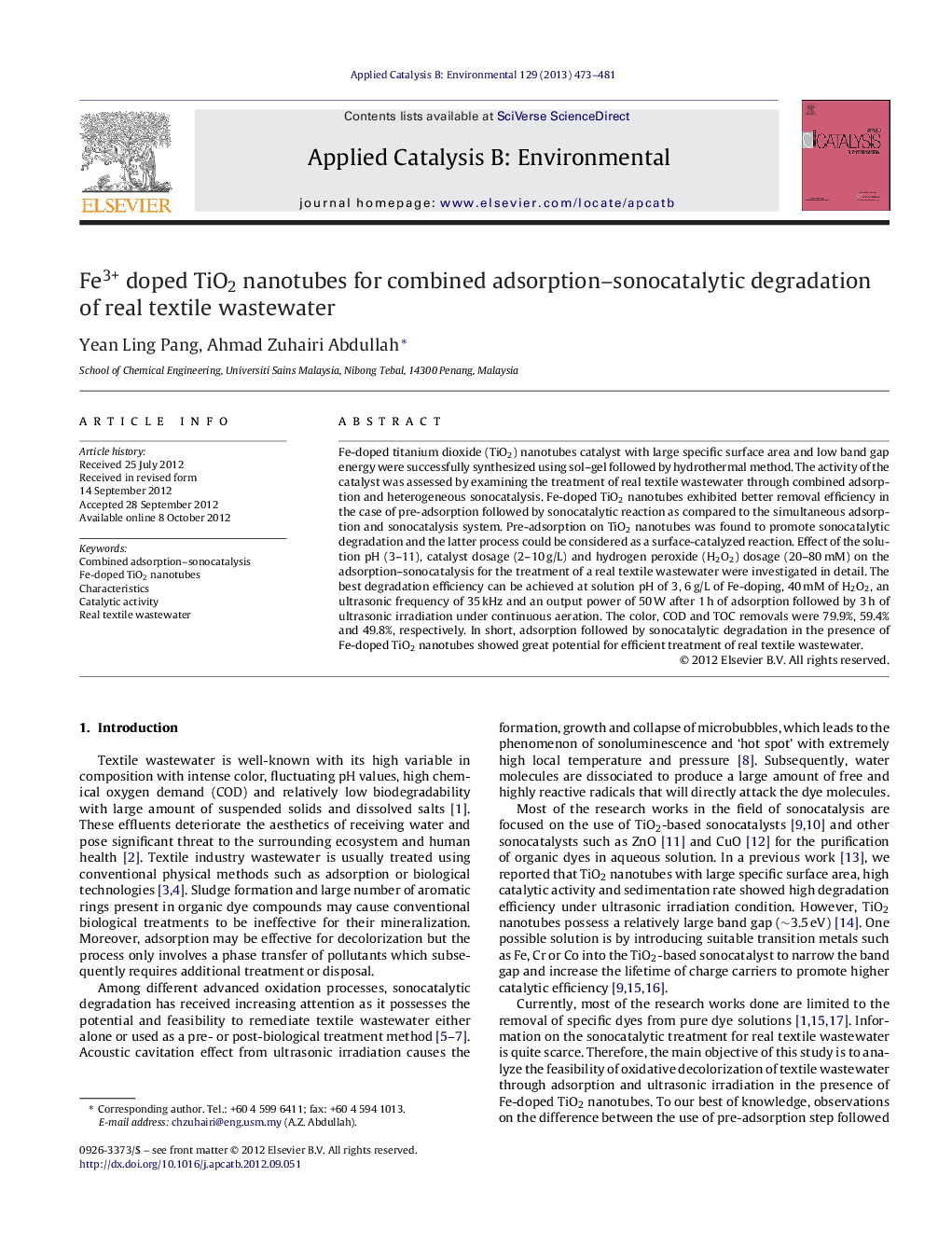| Article ID | Journal | Published Year | Pages | File Type |
|---|---|---|---|---|
| 46029 | Applied Catalysis B: Environmental | 2013 | 9 Pages |
Fe-doped titanium dioxide (TiO2) nanotubes catalyst with large specific surface area and low band gap energy were successfully synthesized using sol–gel followed by hydrothermal method. The activity of the catalyst was assessed by examining the treatment of real textile wastewater through combined adsorption and heterogeneous sonocatalysis. Fe-doped TiO2 nanotubes exhibited better removal efficiency in the case of pre-adsorption followed by sonocatalytic reaction as compared to the simultaneous adsorption and sonocatalysis system. Pre-adsorption on TiO2 nanotubes was found to promote sonocatalytic degradation and the latter process could be considered as a surface-catalyzed reaction. Effect of the solution pH (3–11), catalyst dosage (2–10 g/L) and hydrogen peroxide (H2O2) dosage (20–80 mM) on the adsorption–sonocatalysis for the treatment of a real textile wastewater were investigated in detail. The best degradation efficiency can be achieved at solution pH of 3, 6 g/L of Fe-doping, 40 mM of H2O2, an ultrasonic frequency of 35 kHz and an output power of 50 W after 1 h of adsorption followed by 3 h of ultrasonic irradiation under continuous aeration. The color, COD and TOC removals were 79.9%, 59.4% and 49.8%, respectively. In short, adsorption followed by sonocatalytic degradation in the presence of Fe-doped TiO2 nanotubes showed great potential for efficient treatment of real textile wastewater.
Graphical abstractFigure optionsDownload full-size imageDownload as PowerPoint slideHighlights► Fe-doped TiO2 nanotubes catalyst with low band gap energy. ► Combined adsorption–sonocatalytic degradation of real textile wastewater. ► Pre-adsorption followed by sonocatalysis reaction produced better results. ► Elucidation of effects of important process variables. ► Fe-doped TiO2 nanotubes showed great potential for wastewater treatment.
